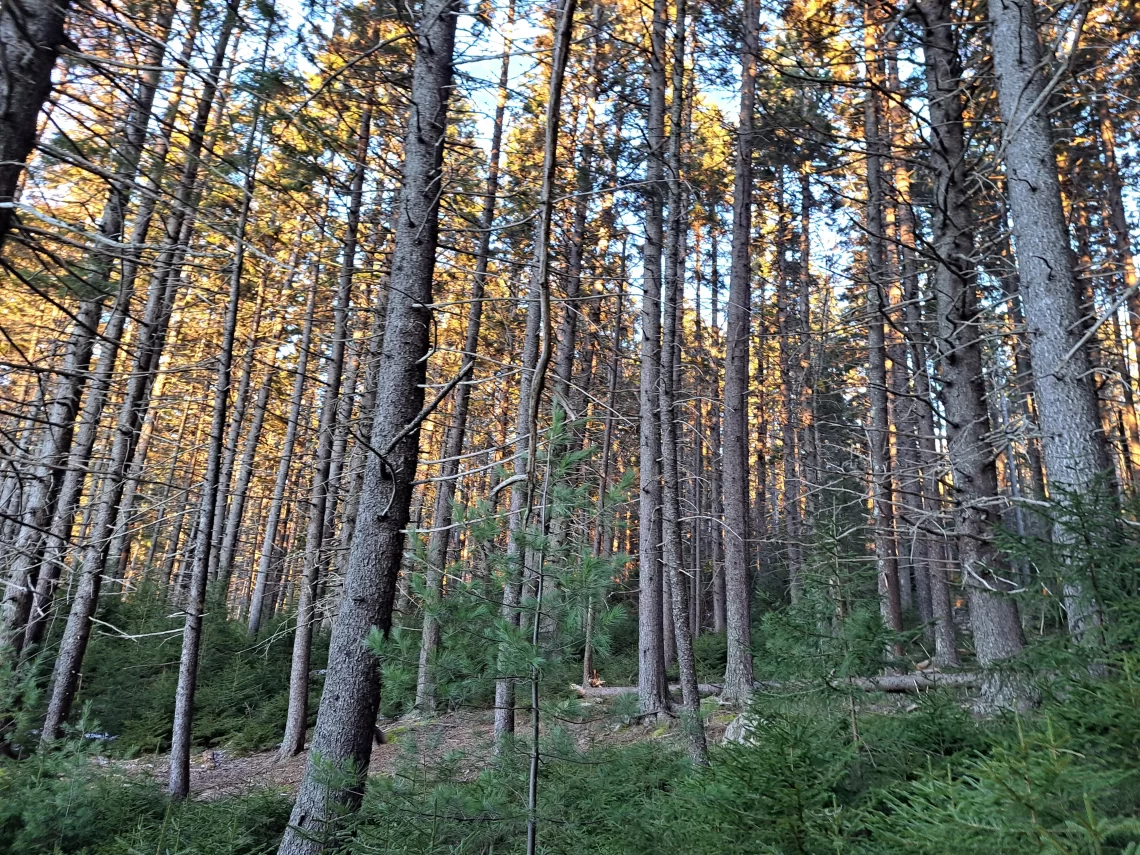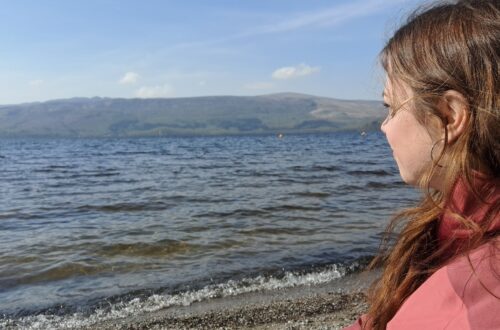Explore the basics of forest bathing and nature-based meditation with tips from a forest bathing guide!
Forest bathing “blends [together] both my love of nature and of spirituality,” Martina Dittmar told me when I’d asked her what drew her to forest bathing in the first place. Matina is a registered Maine guide and Shinrin-yoku instructor and I’d met her on a guided forest bathing walk this past fall, which she led through the Maine woods.
The walk was an incredibly relaxing experience – a group of us observing in companionable silence the way the sunlight danced on the trees, the scent of the fallen leaves beneath our feet, the gentle trickle of a small stream somewhere in the distance. Martina had brought along a deck of cards that she’d made, complete with poetic prompts that she’d written. She’d asked us to reflect on “imperfection” and that prompted me to study the broken branches of a pine tree – how each of those breaks, while superficially “imperfect,” told the life story of that tree.
After the experience, I asked Martina if she’d do a little interview with me on how beginners can try out forest bathing… even if they don’t have access to wooded areas. And so this beginner’s guide to forest bathing was born. I hope you find inspiration here to experiment with forest bathing activities and experience the natural relaxation that comes with mindful observation and a forest bathing practice!
Affiliate disclosure: As an Amazon Associate, I may earn commissions from qualifying purchases.
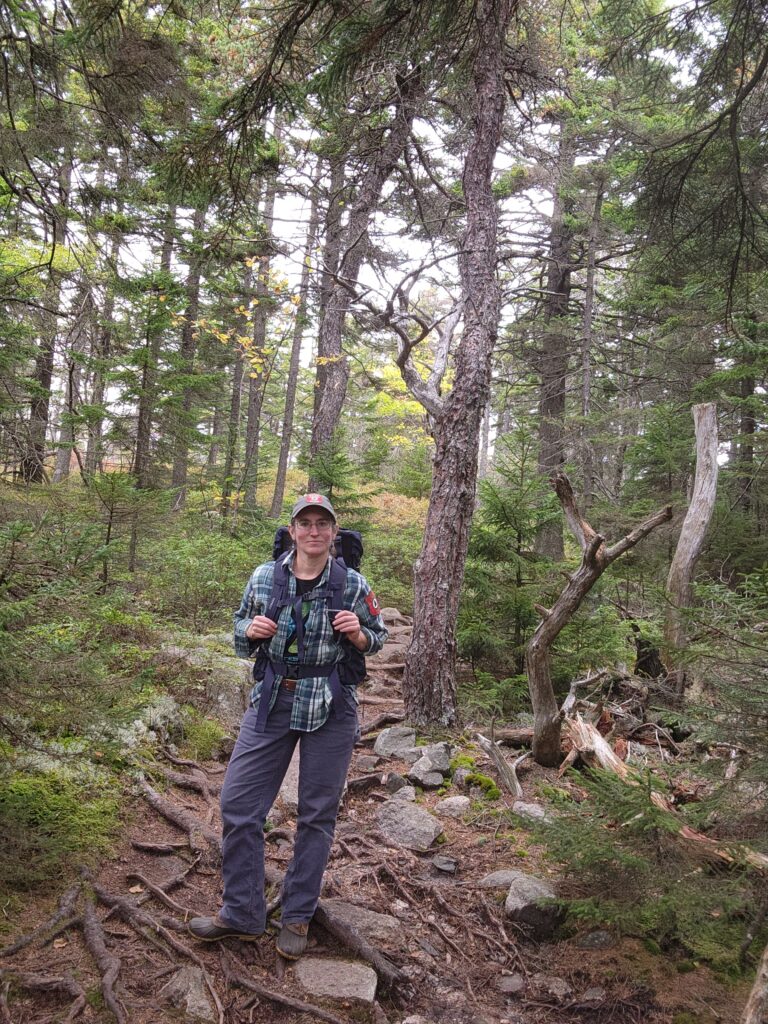
What is Forest Bathing?
Shinrin-yoku, also known as forest bathing or “forest therapy,” was developed in Japan in the 1980s, although folks have been retreating to the woods for rest, relaxation and nature meditation from time immemorial. Shin rin yoku has a very literal translation, with the Japanese word “shinrin” translating into “forest” and “yoku” meaning “bath.” During a forest bathing session, practitioners can walk, sit or lie down depending on their mood and what feels right in that moment… the important thing is getting outside and being intentional about it.
As Martina explains, forest bathing is a “different experience for each person… I tell participants to trust that the forest gives them what they need. That can be hard for some people because they think they need to move.” But really, forest bathing is about “’being,’ rather than ‘doing.’”
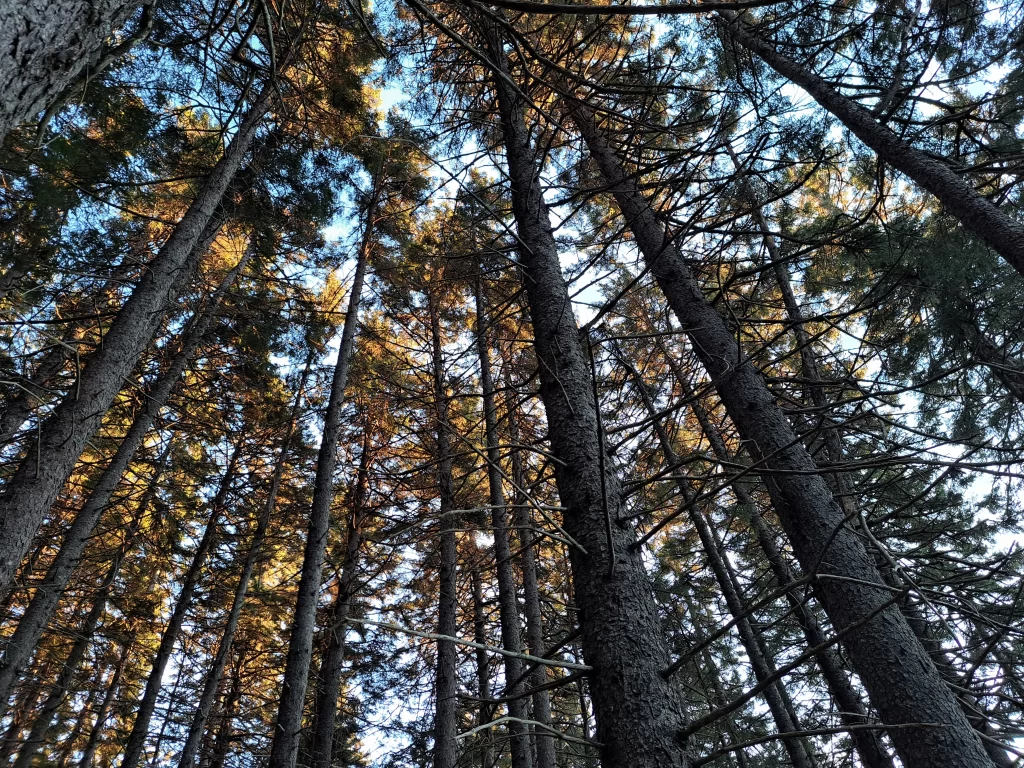
What Are the Benefits of Forest Bathing?
Today, more and more people are living in cities and it’s estimated that the average American spends about 93% of their time indoors. Indoor living and hours and hours of television and computer screen time can cause many people to feel a sense of disconnection from nature. But forest bathing offers a handy and accessible solution.
Over the years, many studies have explored the mental and health benefits of getting out into nature, gardening and keeping houseplants. Advocates of forest bathing emphasize that this technique offers many of the same perks too and it’s been linked to reduced stress and a greater sense of natural mindfulness and relaxation.
“Immersion in nature has given me so many benefits,” explains Martina. “Reducing my anxiety and improving my sleep, teaching me the power of my awareness, improving my creativity and my intuition, and allowing me to simplify my life… The longer I connect with the peaceful qualities of nature, the more I begin to experience true inner peace.”
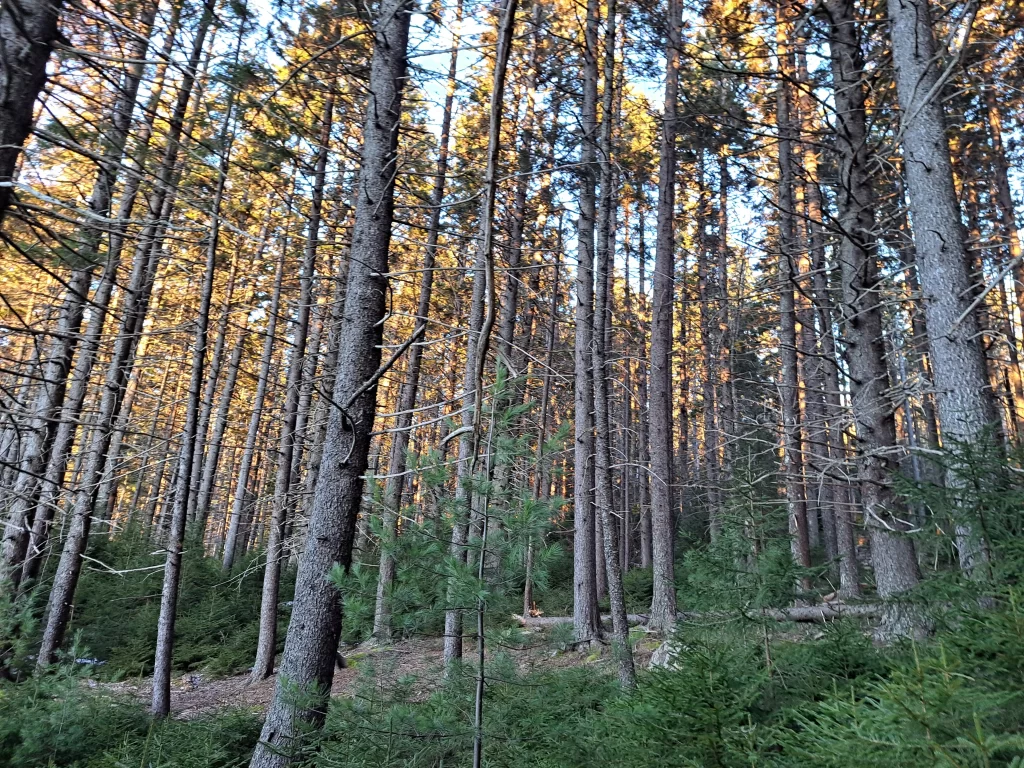
How to Take a Forest Bathing Walk for Beginners
I know when I took my first forest bathing walk, I felt a bit nervous, wondering if I was doing it wrong or if I was supposed to feel a certain way at a certain time. But the thing about forest bathing is that it’s meant to be a personal experience, it’s meant to work for you!
The tips below will hopefully inspire you on your first forest bathing expedition, but feel free to switch things up to make a forest bathing journey that’s totally your own. Both children and adults can enjoy forest bathing, although you’ll want to keep an eye on children during forest bathing sessions, of course!
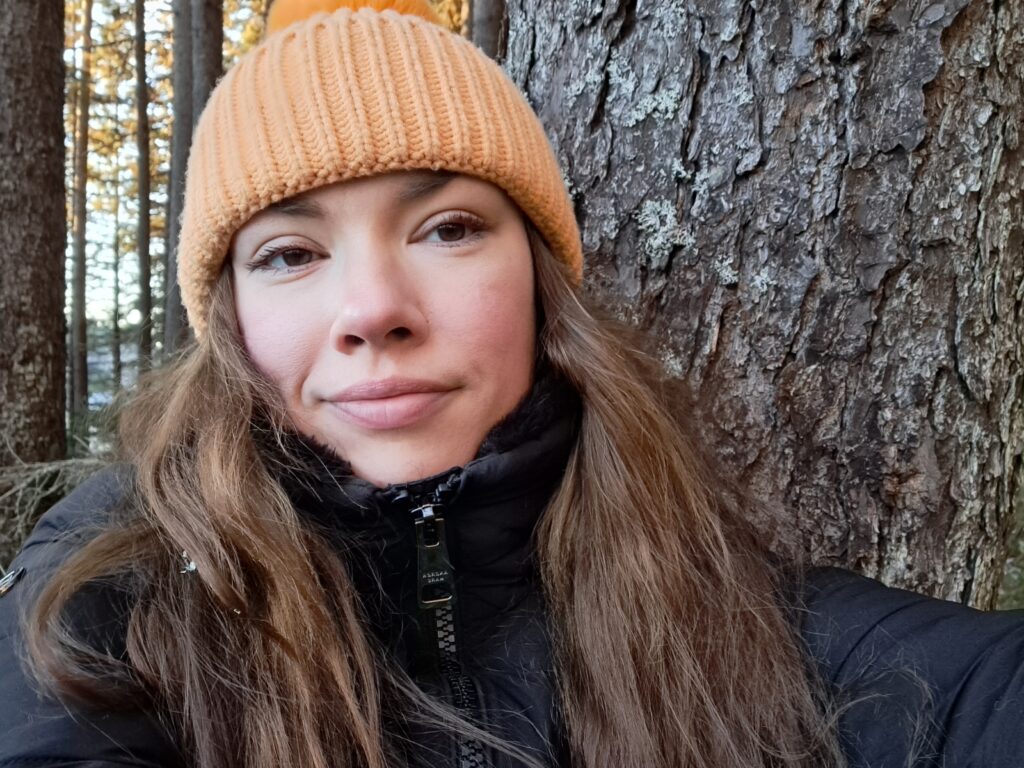
Choose a natural location that speaks to you.
Despite its name, forest bathing doesn’t require a forest and it doesn’t necessarily require any walking either. You can “forest bathe” right in your backyard or at a city park. The important thing is that you choose a location that has meaning for you.
If you love forests, by all means, check out your local hiking trails and find a nice, wooded spot to forest bathe in. However, if you feel more at peace in wild open fields, grassy landscapes or on the shore of a lake, you can “forest bathe” there too! “I even [forest bathe] inside my house on cold days and simply look out the window,” says Martina.
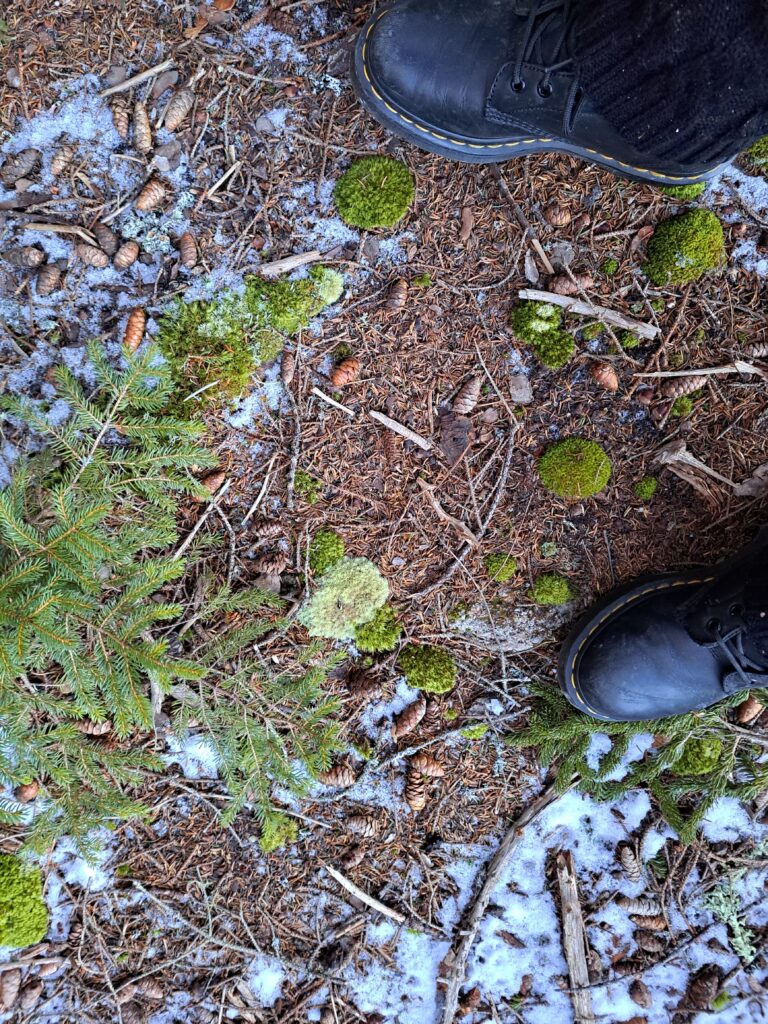
Dress for the weather.
Forest bathing sessions are supposed to be relaxing. However, it’s much harder to be mindful if you’re sweating buckets in a thick sweatshirt or chilled to the bone because you forgot your jacket!
To make your forest bathing sessions as comfortable as possible, check the weather and dress accordingly. Comfy clothes are a must, of course, but you may also want to bring along a sitting mat if you plan to sit on the ground. Watch for brambles and, if you’re heading out into an area where ticks may be present, wear light-colored clothing, bring bug spray, tuck your pants into your socks and follow other tick safety protocols!
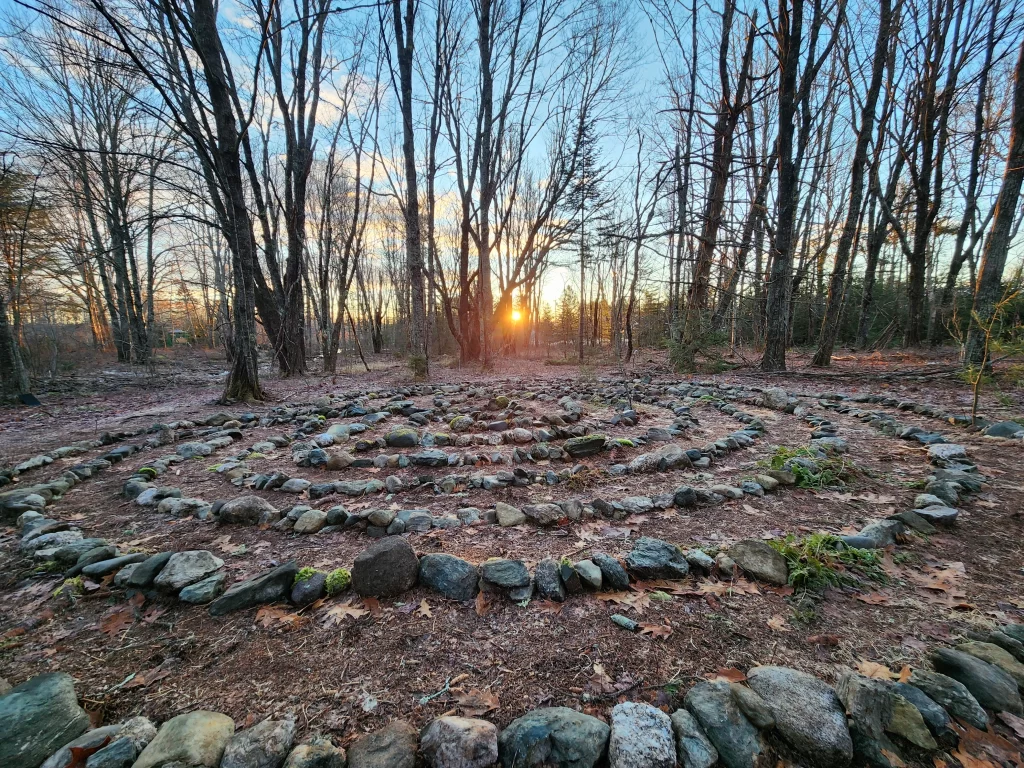
Turn off your phone.
Phones and other electronics (including cameras!) can be a distraction on a forest bathing walk, so it’s best to leave them behind or put them on silent.
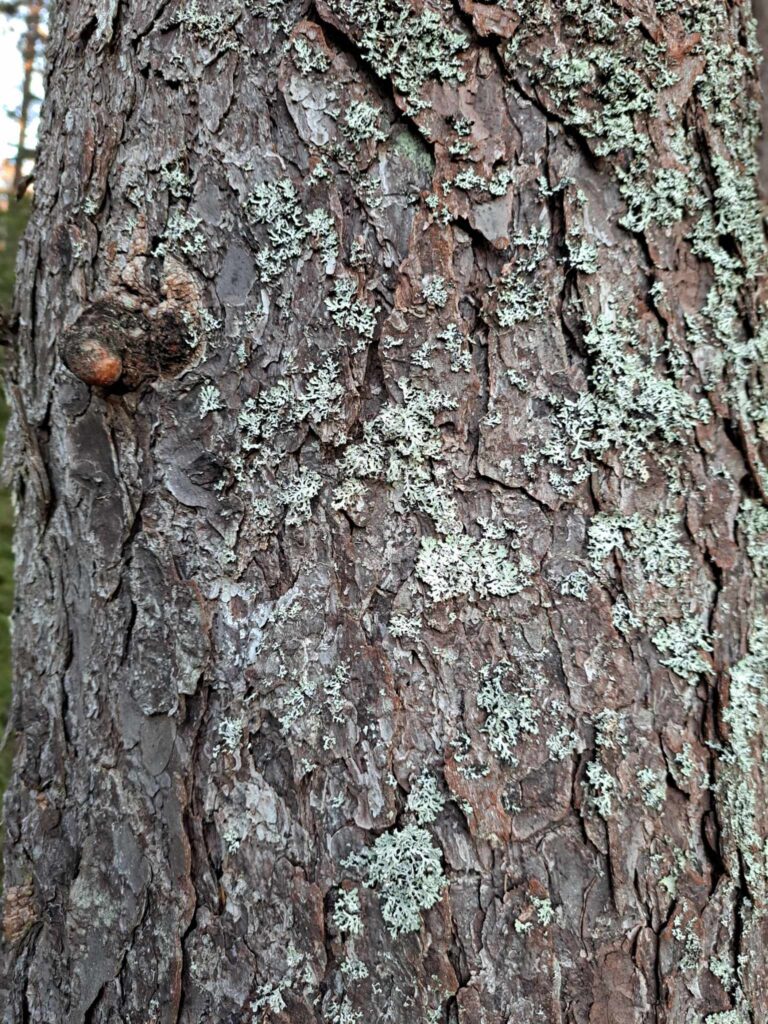
Go slow.
A lot of people confuse forest bathing with hiking, but these two activities are quite different. Most hikers hike with a goal or a destination in mind, but with forest bathing, there is no destination. To forest bathe is to walk without any specific purpose, to experience, to be in the moment, to take the natural world in.
Rather than focusing on a physical destination, focus on observing the small details around you as you forest bathe. Touch trees, run your hand against a stone, feel the breeze in your hair, listen to the bird song around you, dip your toes in the gentle waters of a stream running by, sit just for the sake of sitting. All forest bathing asks of you is your presence.
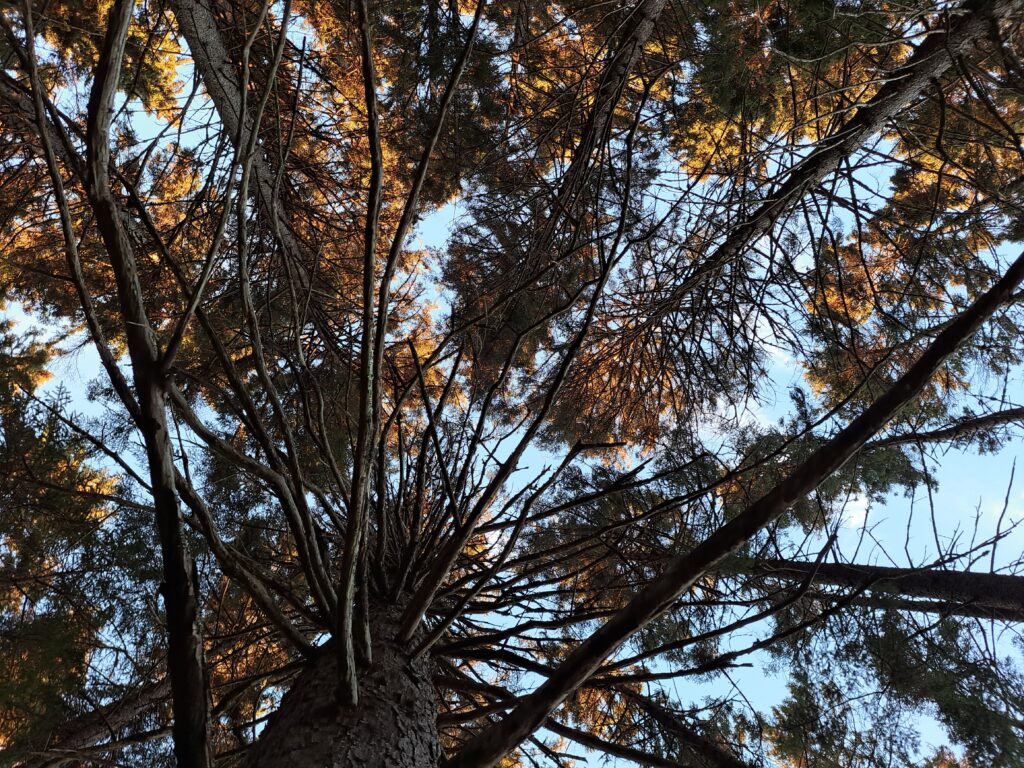
Focus on your senses.
As anyone who meditates can tell you, learning mindfulness takes time and practice and you’re not going to get it all at once. But one way to deepen your sense of presence with forest bathing is to focus on all of your senses, one by one, and to observe the details around you as closely as you can.
Sight: Keep your eyes open during your forest bathing session and notice the way the sunlight plays through the tree leaves. Count how many shades of green you can see around you. Look for other shapes, colors, textures to orient yourself in the moment.
Sound: How many sounds can you hear if you’re really, really quiet? Can you hear birds, water, leaves falling in the distance? What does silence “sound” like if you listen to it closely?
Touch: Allow your fingers to trail over different tree barks, stones and other textures. What do you feel if you really pay attention?
Smell: What does a pine branch smell like up close? Do different tree barks emit different smells? Mentally describe the the scent of fresh air to yourself and notice if you can detect any other scents around you.
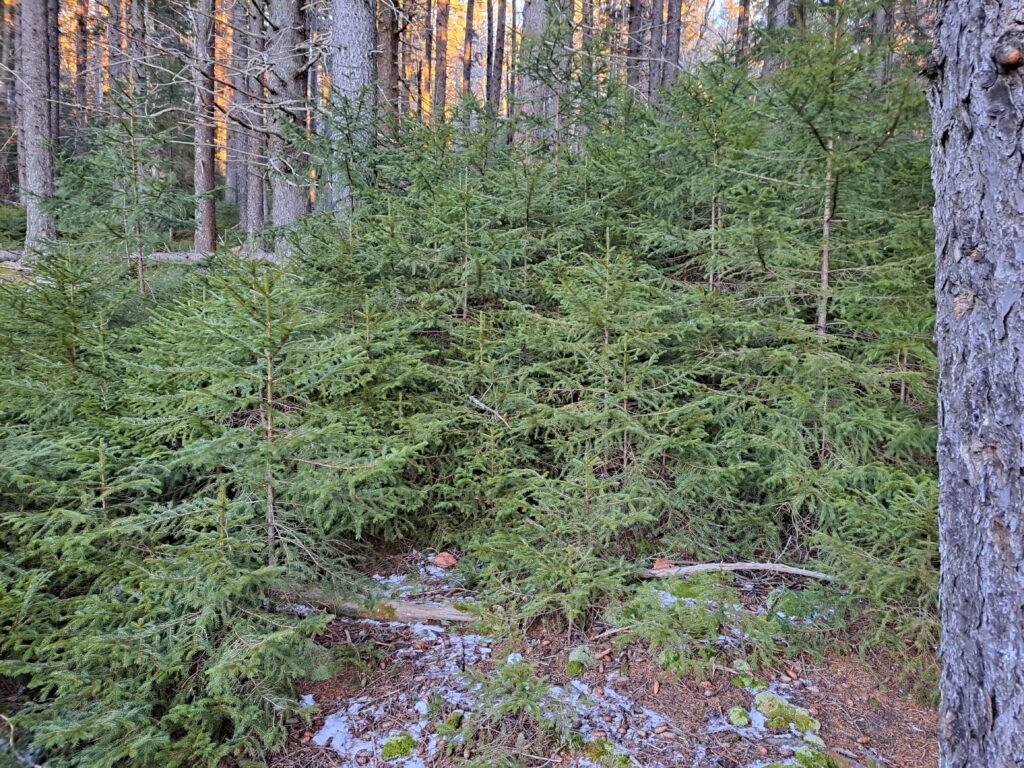
Breathe deeply.
Being mindful of our senses is one way to center in the present, but intentional breathing using various breathing techniques can do this too. Find a breathing technique that resonates with you and try it out while forest bathing!
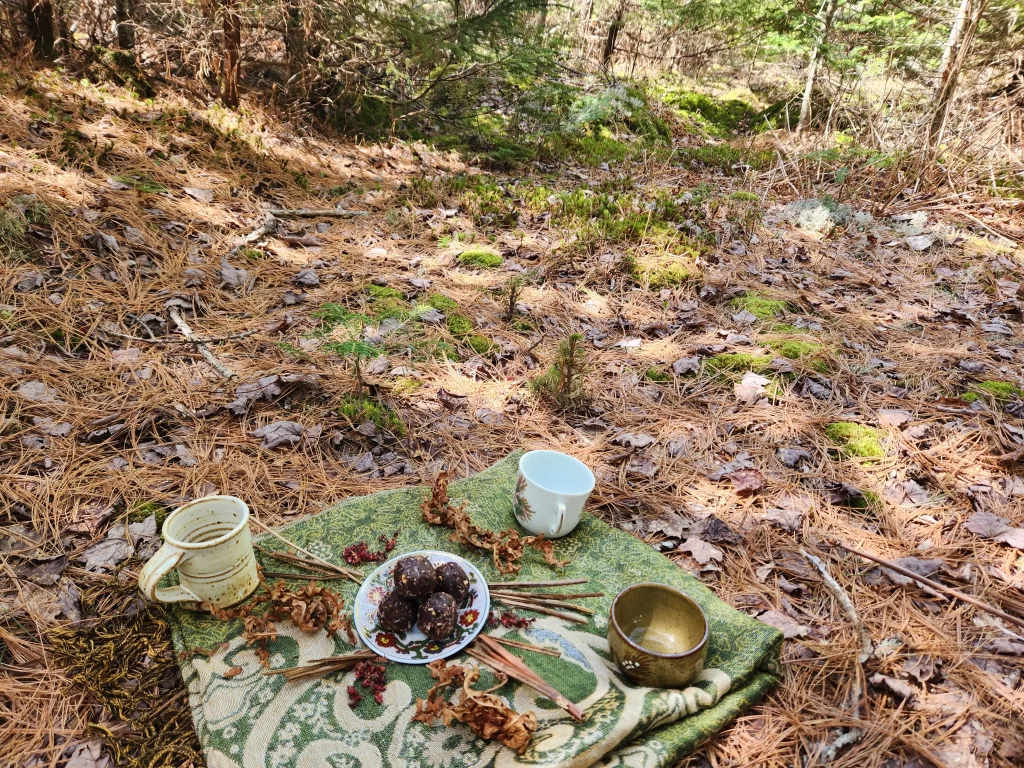
Experiment.
On a forest bathing trek, you can walk slowly or rest and observe the world around you. But if you feel more comfortable “doing,” you can perform a gentle activity to help you stay focused. Some activities that blend well with forest bathing include:
- Gentle yoga
- Tai chi
- Other meditation techniques
- Picnicking
- Journaling
- Drawing
- Crafting with natural found objects
- Using mindfulness cards

Listen to your instincts.
One of the best things about forest bathing is that it encourages us to be present and to follow our intuition. As you walk, allow your excitement to guide you, explore the little details you spot along the way and try out different techniques if one technique isn’t working. You can forest bathe for as long or as short of a time as is comfortable for you and sessions can range in length from 10 minutes to 2 hours.
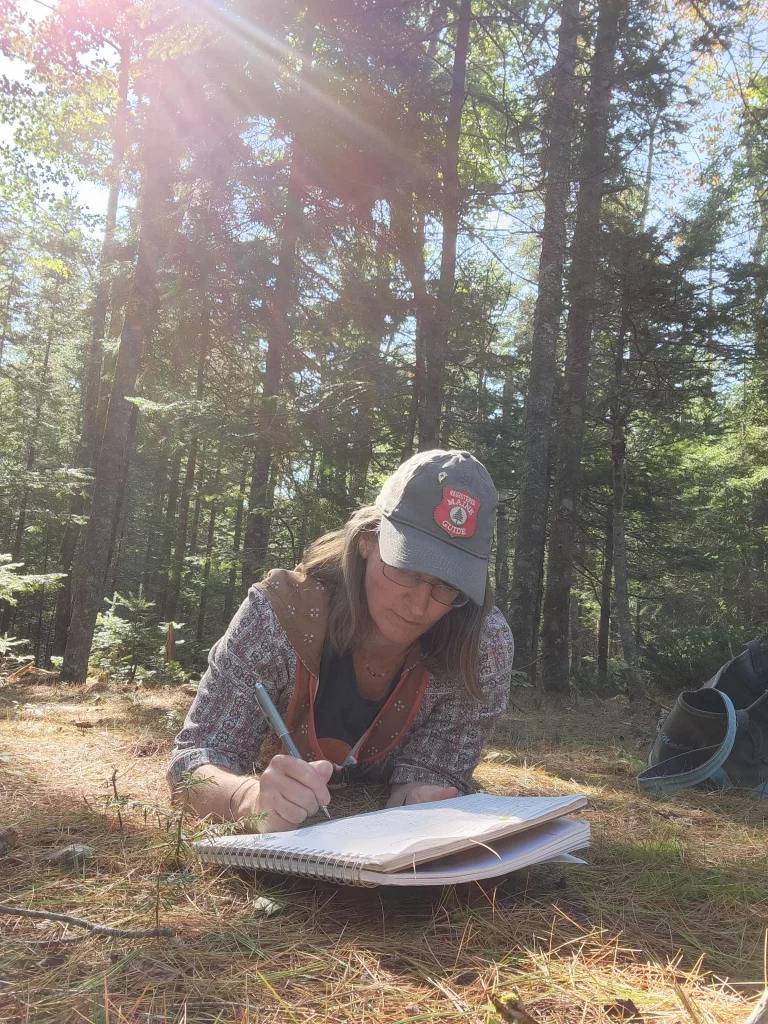
Next Steps: How to Advance Your Forest Bathing Practice
Going slow with a short forest bathing walk is the best way to get started. As your practice develops, you can always extend your forest bathing adventure until you’re outdoors for an hour or two at a time. However, if you’d like to learn even more about forest bathing right now, there are plenty of excellent books on the topic, such as:
- Shinrin Yoku: The Japanese Art of Forest Bathing by Yoshifumi Miyazaki
- Forest Bathing: How Trees Can Help You Find Health and Happiness by Dr. Qing Li
- Forest Bathing: Mindful Meditation Connecting You to Nature and Eco-Consciousness Through the Practice of Shinrin-Yoku by Elise Ingram
Depending on where you live, you may also be able to find a dedicated Shinrin yoku guide to take you on a forest bathing walk and teach you hands-on activities that will develop your experience. (If you live in the Maine area, you may want to contact Martina herself through her website, Radiant Life Within, Facebook page or Instagram page!)
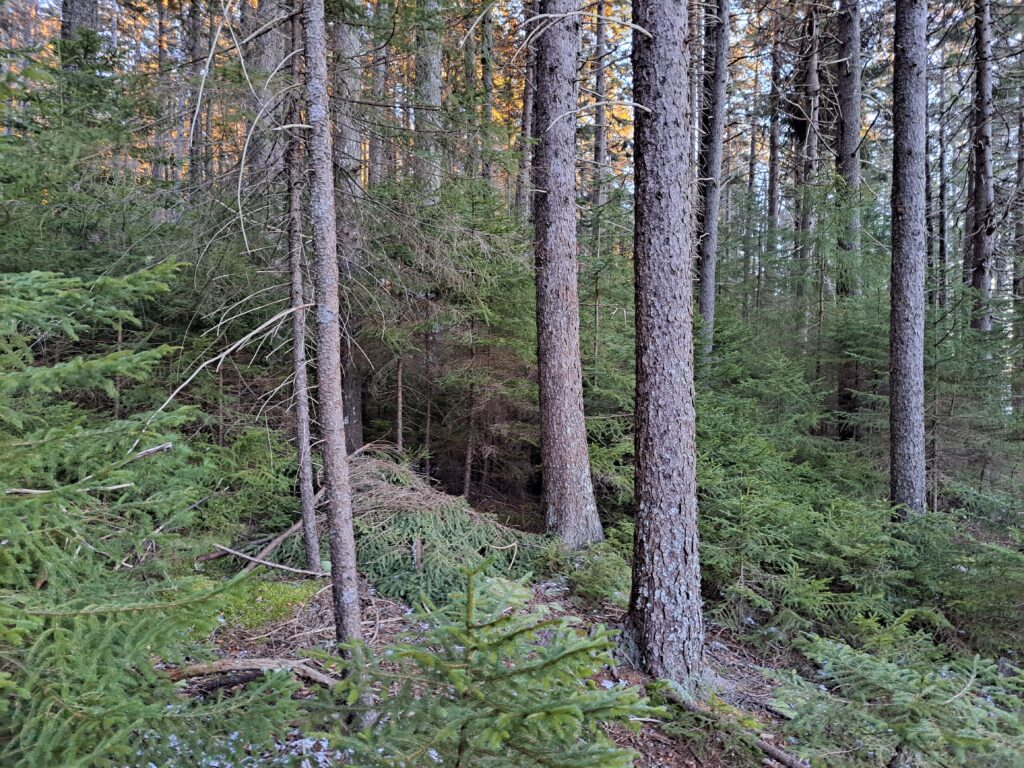
Frequently Asked Questions About Bathing Forest Walks
Is forest bathing the same as grounding?
Grounding and forest bathing are closely related, but they are a bit different. Grounding typically involves directly touching the ground by walking barefoot or sitting against a tree. Forest bathing is an intentional and mindful meditative practice, but you can practice grounding or “earthing” while forest bathing!
How do I interact with nature in my daily life?
Taking regular forest meditation walks is one way to reconnect to nature, but you can try other practices too. Gardening, for instance, can get you outdoors and encourage a deeper connection with the world around you. Keeping houseplants, swimming in lakes, reading a good nature-related book, hanging up a bird feeder, nature journaling, putting out a porch swing or taking a slower and more mindful walks to work can all help too!
How long do the benefits of forest bathing last?
Studies that have explored the benefits of forest bathing have found that the effects of forest bathing can last anywhere from 7 to 30 days!
